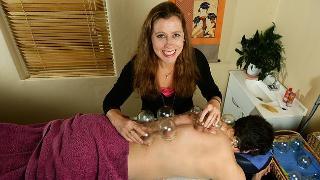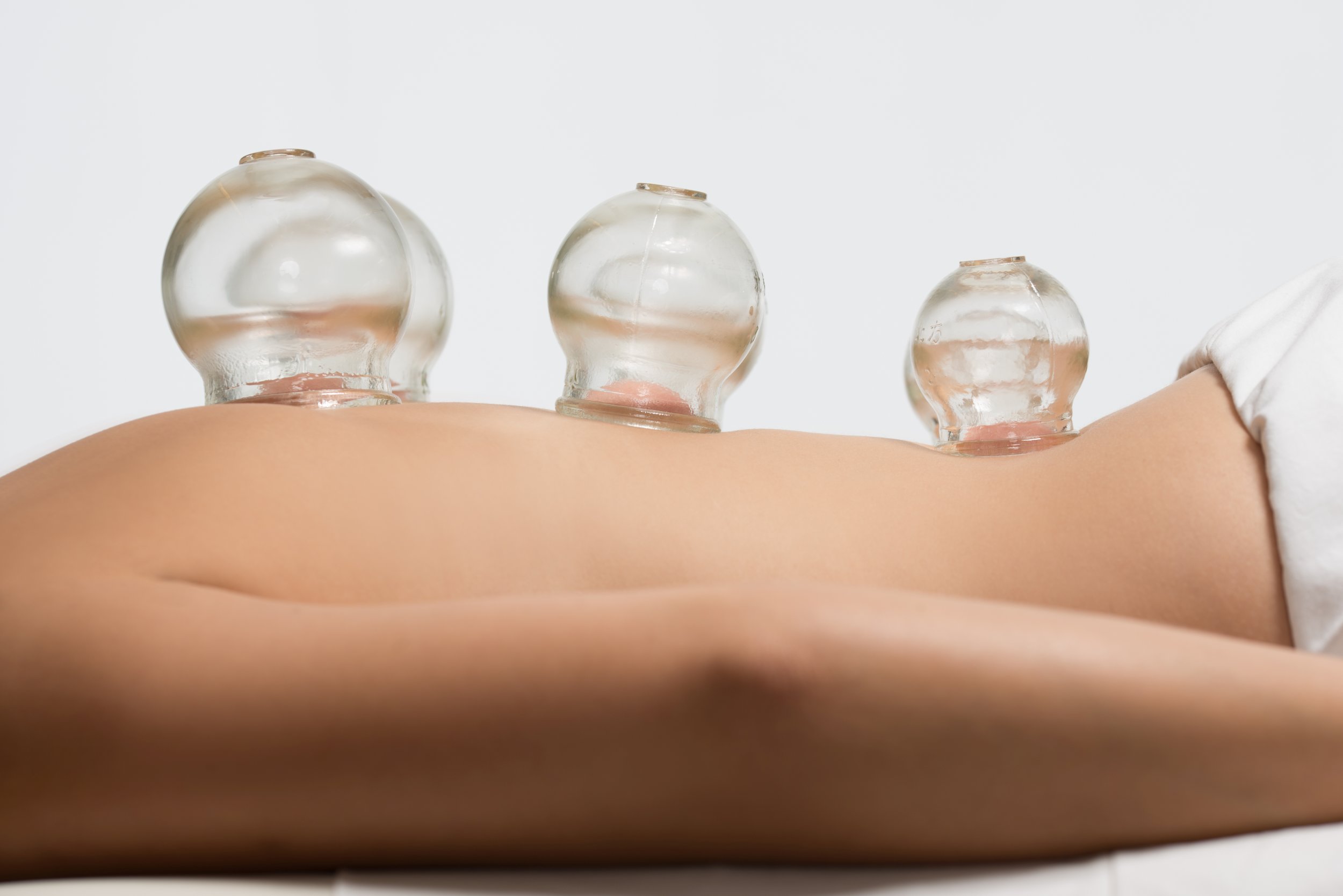Cupping Technique
The technique of cupping is simple. Generally, a specially made glass jar is used which is round and has a broad, flat edge. A flame is inserted briefly and rapidly into the jar; this is not enough to heat the jar but sufficient to heat the air in the jar and burn the oxygen. This has the effect of creating a partial vacuum. If the jar is quickly placed onto the skin, usually the back or belly, the vacuum causes the jar to stick to the skin. Indeed it will pull a quantity of skin and underlying tissue inside the rim of the cup. Effectively what is happening is the cup is acting like a local pump. By drawing on the tissues, the cupping automatically draws on or mobilises the local fluids. Therefore any of the pathogenic factors ("malevolent spirits") such as Heat, Cold or Damp will be dispersed.
Cups will usually leave a bruise which will itself be indicative of the level of congestion or invasion of the local tissues. You will be able to observe through the glass jar an immediate discoloration of the skin: a red colour indicates Heat; dark red/purplish indicates chronic Heat and/or stagnant Blood; a white sheen is indicative of Cold; moisture gathering in the jar indicates the presence of Damp. Occasionally blistering will occur which is generally indicative of depletion of Qi. The bruise will disperse gradually over a few days; darker bruising may take a week or ten days to fade completely.
Cups are frequently used on the Back points they can be used on the scapula or on top of the shoulders as well as around the sacrum and buttocks. It is highly effective way of dispersing stagnant Blood around old injuries or areas of overuse such as in frozen shoulder syndrome. Any area of soft tissue is available for cupping as long as the skin is flat enough to create the suction. It is not appropriate to cup areas with insufficient flesh, such as the sacrum of a male. Excessively hairy skin can first be oiled to facilitate a stronger grip.

Mychelle conducting Cupping Treatment at Utopia Health Care Clinic, Melbourne, Australia

